| Listing 1 - 10 of 10 |
Sort by
|
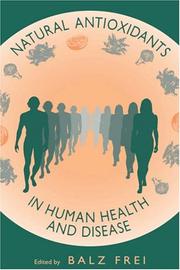
ISBN: 0122669754 Year: 1994 Publisher: San Diego New York Boston Academic Press
Abstract | Keywords | Export | Availability | Bookmark
 Loading...
Loading...Choose an application
- Reference Manager
- EndNote
- RefWorks (Direct export to RefWorks)
Active oxygen --- Antioxidants --- Free radicals (Chemistry) - Pathophysiology.
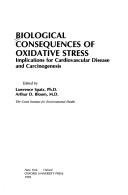
ISBN: 0195072960 Year: 1992 Publisher: New York Oxford University Press
Abstract | Keywords | Export | Availability | Bookmark
 Loading...
Loading...Choose an application
- Reference Manager
- EndNote
- RefWorks (Direct export to RefWorks)
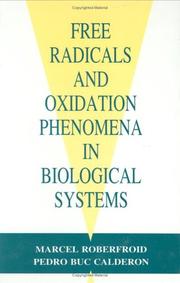
ISBN: 0824795873 9780824795870 Year: 1994 Publisher: New York Marcel Dekker
Abstract | Keywords | Export | Availability | Bookmark
 Loading...
Loading...Choose an application
- Reference Manager
- EndNote
- RefWorks (Direct export to RefWorks)
Human biochemistry --- Biopharmaco-efficiency. Pharmacokinetics --- Oxygène actif --- Oxydation biologique --- Oxygène actif --- Free radicals (Chemistry) --- Active oxygen --- Oxidation, Physiological --- Pathophysiology --- Oxidation, Physiological. --- Pathophysiology. --- Radicaux libres (Chimie) --- Physiopathologie --- Free radicals (Chemistry) - Pathophysiology --- Active oxygen - Pathophysiology
Book
ISBN: 0306449811 146135742X 1461518334 Year: 1994 Volume: 366 Publisher: New York, NY : Plenum Press,
Abstract | Keywords | Export | Availability | Bookmark
 Loading...
Loading...Choose an application
- Reference Manager
- EndNote
- RefWorks (Direct export to RefWorks)
Antioxidants --- Oxidative Stress --- Reactive Oxygen Species --- Biological Markers --- therapeutic use --- diagnostic use --- Therapeutic use --- Congresses --- Free radicals (Chemistry) --- Pathophysiology --- Analysis --- Free radicals (Chemistry) - Pathophysiology - Congresses. --- Free radicals (Chemistry) - Analysis - Congresses. --- Antioxidants - Therpaeutic use - Congresses. --- FREE RADICALS (MEDICINE) --- ANTIOXIDANTS --- LIPIDS --- FREE RADICALS --- REACTIONS
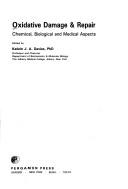
ISBN: 0080417493 1322269319 1483287661 9780080417493 Year: 1991 Publisher: New York : Pergamon Press,
Abstract | Keywords | Export | Availability | Bookmark
 Loading...
Loading...Choose an application
- Reference Manager
- EndNote
- RefWorks (Direct export to RefWorks)
Active oxygen --- Active oxygen in the body --- Antioxidants --- Free radicals (Chemistry) --- Lipids --- Free Radicals --- Oxygen --- Pathophysiology --- Congresses --- Therapeutic use --- Peroxidation --- congresses --- adverse effects --- physiology --- congresses. --- Lipids - Peroxidation - Congresses --- Antioxidants - Therapeutic use - Congresses --- Free radicals (Chemistry) - Pathophysiology - Congresses --- Active oxygen - Pathophysiology - Congresses --- Active oxygen in the body - Congresses --- Oxygen - adverse effects - congresses --- Antioxidants - congresses --- Free Radicals - congresses
Book
ISBN: 1855780690 9781855780699 Year: 1995 Volume: 61 Publisher: London Portland Press
Abstract | Keywords | Export | Availability | Bookmark
 Loading...
Loading...Choose an application
- Reference Manager
- EndNote
- RefWorks (Direct export to RefWorks)
Biopharmaco-efficiency. Pharmacokinetics --- Free radicals (Chemistry) --- Oxidative stress --- Air --- Food additives --- Air Pollution --- Food Additives --- Free Radicals --- Pathophysiology --- Pollution --- Physiological effect --- congresses. --- General biochemistry --- Drugs --- Congresses. --- Free radicals (Chemistry) - Pathophysiology - Congresses. --- Oxidative stress - Pathophysiology - Congresses. --- Air - Pollution - Congresses. --- Drugs - Physiological effect - Congresses. --- Food additives - Congresses. --- Air Pollution - congresses --- Food Additives - congresses. --- Free Radicals - congresses --- RADICALS (CHEMISTRY) --- ENVIRONMENT --- OXIDATIVE STRESS, BIOLOGICAL --- PHARMACEUTICAL PREPARATIONS --- FOOD ADDITIVES --- ANTIOXIDANTS --- BIOLOGICAL STUDIES
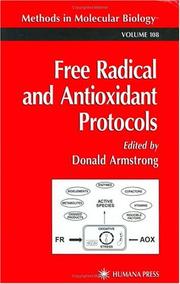
ISBN: 0896034720 058523566X 9786610835980 1280835982 1592592546 9780896034723 1617370495 Year: 1998 Volume: 108 Publisher: Totowa, NJ : Humana Press : Imprint: Humana,
Abstract | Keywords | Export | Availability | Bookmark
 Loading...
Loading...Choose an application
- Reference Manager
- EndNote
- RefWorks (Direct export to RefWorks)
In Free Radical and Antioxidant Protocols, seventy-six leading international authorities describe cutting-edge methodologies for quantifying free radical and antioxidant analytes in tissue and body fluids using experimental models and in vitro procedures. These user-friendly and easily reproducible techniques cover the essential tasks, including radical generating systems, direct measurement or trapping of reactive radical species and acute-phase proteins, and measurement of metabolic intermediates derived from the oxidation of lipids, proteins, and nucleic acids. There are also methods for the determination of vitamin, enzymatic, and water-soluble antioxidants, as well as of essential micronutrients and cofactors. The techniques take advantage of new instrumentation-probes, photon counting, chemiluminescence, and caged compounds, with an emphasis on HPLC-and are adaptable to a wide range of applications. Free Radical and Antioxidant Protocols provides state-of-the-art methodology and biotechnology in a convenient format for both academic and corporate biomedical scientists. The detailed, laboratory-tested free-radical assays, many of them presented here for the first time, will illuminate the study of both primary and secondary oxidative stress and contribute significantly to our understanding of the many disorders associated with this process.
Analytical biochemistry --- Free radicals (Chemistry) --- Antioxidants --- Oxidation, Physiological --- Stress (Physiology) --- Pathophysiology --- Laboratory manuals. --- Physiological effect --- Research --- Laboratory manuals --- Enzymes --- Oxygène --- Oxygen --- Consommation d'oxygène --- Oxygen consumption --- Métabolisme des lipides --- Lipid metabolism --- Oxydation --- Oxidation --- Life sciences. --- Biochemistry. --- Life Sciences. --- Biochemistry, general. --- Biological chemistry --- Chemical composition of organisms --- Organisms --- Physiological chemistry --- Biology --- Chemistry --- Medical sciences --- Biosciences --- Sciences, Life --- Science --- Composition --- Biological oxidation --- Oxidation, Biological --- Physiological oxidation --- Biochemistry --- Chemical inhibitors --- Physiological stress --- Tension (Physiology) --- Adaptation (Biology) --- Radicals (Chemistry) --- Free radical reactions --- Free radicals (Chemistry) - Pathophysiology - Laboratory manuals --- Antioxidants - Physiological effect - Laboratory manuals --- Oxidation, Physiological - Laboratory manuals --- Stress (Physiology) - Research - Laboratory manuals
Book
ISBN: 1603275134 9786612971297 1603275142 1282971298 Year: 2010 Publisher: New York : Springer,
Abstract | Keywords | Export | Availability | Bookmark
 Loading...
Loading...Choose an application
- Reference Manager
- EndNote
- RefWorks (Direct export to RefWorks)
The role of free radicals and oxidative stress in neurological disorders has only recently been recognized, leaving clinical neurologists to seek in vain for information on the subject even in major textbooks. What published information there is may consist of brief reminders of the possible association of superoxidase dismutase with familial amyotrophic lateral sclerosis and nitrous oxide with migraine. With luck they may also find information on the purported role of free radicals in the pathogenesis of traumatic brain injury. Oxidative Stress and Free Radical Damage in Neurology sets the record straight, focusing on clinical and research issues regarding the interplay of free radicals and the human nervous system. Crucially, the chapters cover numerous antioxidants and their possible therapeutic role in neurological disorders. Key illnesses such as epilepsy, multiple sclerosis and Parkinson’s are analyzed, and chapters also examine more general issues such as the link between free radicals and inflammation of the central nervous system. Clinicians and laboratory researchers alike will find that this book augments their understanding not only of the widespread involvement of free radicals in the central nervous system but also of some uncertainties surrounding whether free radical damage in neurology plays a primary or secondary role.
Free radicals (Chemistry) -- Pathophysiology. --- Nervous system -- Diseases -- Etiology. --- Oxidative stress. --- Oxidative stress --- Free radicals (Chemistry) --- Nervous system --- Organic Chemicals --- Diseases --- Stress, Physiological --- Central Nervous System Diseases --- Metabolism --- Inorganic Chemicals --- Metabolic Phenomena --- Chemicals and Drugs --- Physiological Processes --- Nervous System Diseases --- Brain Diseases --- Oxidative Stress --- Free Radicals --- Physiological Phenomena --- Phenomena and Processes --- Medicine --- Health & Biological Sciences --- Neurology --- Pathology --- Pathophysiology --- Etiology --- Neurology. --- Medicine. --- Molecular biology. --- Neurosciences. --- Cell biology. --- Biomedicine. --- Cell Biology. --- Molecular Medicine. --- Neuropsychiatry --- Oxidation-reduction reaction --- Stress (Physiology) --- Cytology. --- Clinical sciences --- Medical profession --- Human biology --- Life sciences --- Medical sciences --- Physicians --- Cell biology --- Cellular biology --- Biology --- Cells --- Cytologists --- Neural sciences --- Neurological sciences --- Neuroscience --- Health Workforce --- Molecular biochemistry --- Molecular biophysics --- Biochemistry --- Biophysics --- Biomolecules --- Systems biology
Book
ISBN: 1461461650 1489988823 1461461669 1299336914 Year: 2013 Publisher: New York : Humana Press,
Abstract | Keywords | Export | Availability | Bookmark
 Loading...
Loading...Choose an application
- Reference Manager
- EndNote
- RefWorks (Direct export to RefWorks)
Joint diseases are a major public health concern. Reactive oxygen species are mediators in pathways associated with joint tissue injury. Oxidative Stress in Applied Basic Research and Clinical Practice: Studies on Arthritis and Joint Disorders provides background to understanding the role of reactive oxygen species in joint diseases, as well as therapeutic strategies for their regulation. International experts discuss recent advances on experimental and clinical data focused on free radical-mediated mechanisms of disease. The book also addresses the protective role of antioxidants against the insult of reactive oxygen species in rheumatic diseases.
Free radicals (Chemistry) -- Pathophysiology. --- Joints -- Diseases. --- Oxidative stress. --- Joints --- Metabolism --- Inorganic Chemicals --- Musculoskeletal Diseases --- Molecular Mechanisms of Pharmacological Action --- Biological Science Disciplines --- Diseases --- Natural Science Disciplines --- Pharmacologic Actions --- Chemicals and Drugs --- Metabolic Phenomena --- Disciplines and Occupations --- Chemical Actions and Uses --- Phenomena and Processes --- Joint Diseases --- Physiology --- Oxidative Stress --- Free Radicals --- Antioxidants --- Biology --- Health & Biological Sciences --- Cytology --- Arthritis. --- Diseases. --- Arthropathy --- Arthritides --- Inflammation --- Life sciences. --- Rheumatology. --- Cell biology. --- Life Sciences. --- Oxidative Stress. --- Cell Biology. --- Rheumatology --- Cytology. --- Internal medicine --- Connective tissues --- Cell biology --- Cellular biology --- Cells --- Cytologists --- Oxidation-reduction reaction --- Stress (Physiology) --- etilolgy. --- physiology. --- therapy. --- therapeutic use. --- adverse effects. --- Arthropathies --- Joint Disease
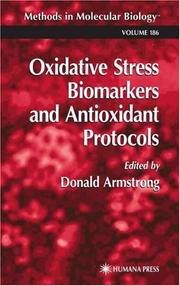
ISBN: 0896038505 0585403333 9786610821358 1280821353 1592591736 1617372226 Year: 2002 Publisher: Totowa, N.J. Humana Press
Abstract | Keywords | Export | Availability | Bookmark
 Loading...
Loading...Choose an application
- Reference Manager
- EndNote
- RefWorks (Direct export to RefWorks)
Oxidative stress has been linked to a variety of medical problems, including cardiovascular disease, cancer, arthritis, diabetes, and aging. Drawing on the growing volume of research into the impact of oxidative stress on pathophysiological mechanisms, Donald Armstrong updates and expands his highly praised Free Radical and Antioxidant Protocols (Humana, 1998) with a collection of new and valuable methods for evaluating the perturbations in cell function resulting from increased oxidative stress. Presented in a user-friendly, step-by-step format by accomplished investigators from prestigious universities, institutes, and laboratories around the world, these readily reproducible techniques cover both free radical-derived and antioxidant biomarkers. The methodologies demonstrated include ELISA, HPLC, infrared spectroscopy, gas chromatography-mass spectroscopy, immunoblotting, electroelution fractionation, isoelectric focusing, voltammetry, and electron paramagnetic resonance imaging. Special emphasis is given to the separation of complex mixtures of plant antioxidants, soft drug design to protect from toxic oxidative metabolites, in vitro oxidation conditions, and correcting for random measurement error to improve statistical interpretation. A soon-to-be-published companion volume, Oxidants and Antioxidants: Ultrastructure and Molecular Biology Protocols (Humana, 2002), contains state-of-the-art molecular and ultrastructural methods that expand the total number of protocols to 109 assays. Cutting-edge and highly practical, Oxidative Stress Biomarkers and Antioxidant Protocols provides many powerful new tools for detecting oxidative stress and for investigating the possibilities for therapeutic intervention monitoring in a variety of serious diseases.
Molecular biology --- Antioxidants -- Physiological effect -- Laboratory manuals. --- Electronic books. -- local. --- Free radicals (Chemistry) -- Pathophysiology -- Laboratory manuals. --- Oxidation, Physiological -- Laboratory manuals. --- Stress (Physiology) -- Research -- Laboratory manuals. --- Free radicals (Chemistry) --- Antioxidants --- Oxidative stress --- Free Radicals --- Oxidative Stress --- Protective Agents --- Molecular Mechanisms of Pharmacological Action --- Stress, Physiological --- Inorganic Chemicals --- Organic Chemicals --- Metabolism --- Chemicals and Drugs --- Metabolic Phenomena --- Physiological Effects of Drugs --- Pharmacologic Actions --- Physiological Processes --- Specialty Uses of Chemicals --- Chemical Actions and Uses --- Physiological Phenomena --- Phenomena and Processes --- Biology - General --- Pathology --- Biochemistry --- Biology --- Chemistry --- Medicine --- Physical Sciences & Mathematics --- Health & Biological Sciences --- Pathophysiology --- Physiological effect --- Research --- Oxidation, Physiological --- Stress (Physiology) --- Physiological stress --- Tension (Physiology) --- Adaptation (Biology) --- Biological oxidation --- Oxidation, Biological --- Physiological oxidation --- Chemical inhibitors --- Radicals (Chemistry) --- Free radical reactions --- Biochemistry. --- Biochemistry, general. --- Biological chemistry --- Chemical composition of organisms --- Organisms --- Physiological chemistry --- Medical sciences --- Composition
| Listing 1 - 10 of 10 |
Sort by
|

 Search
Search Feedback
Feedback About UniCat
About UniCat  Help
Help News
News